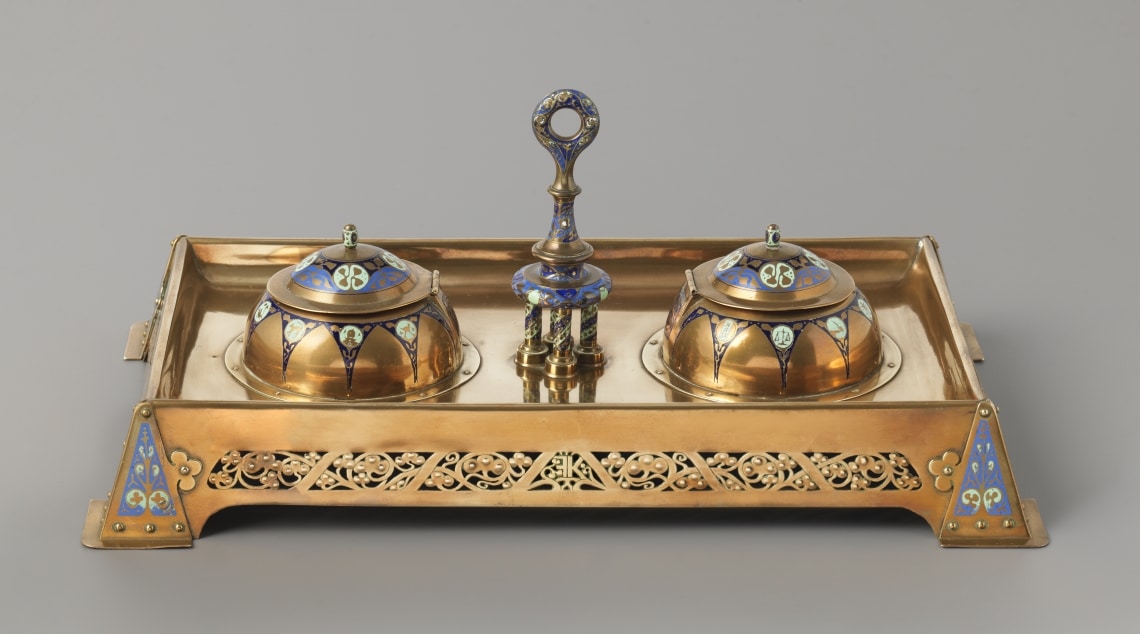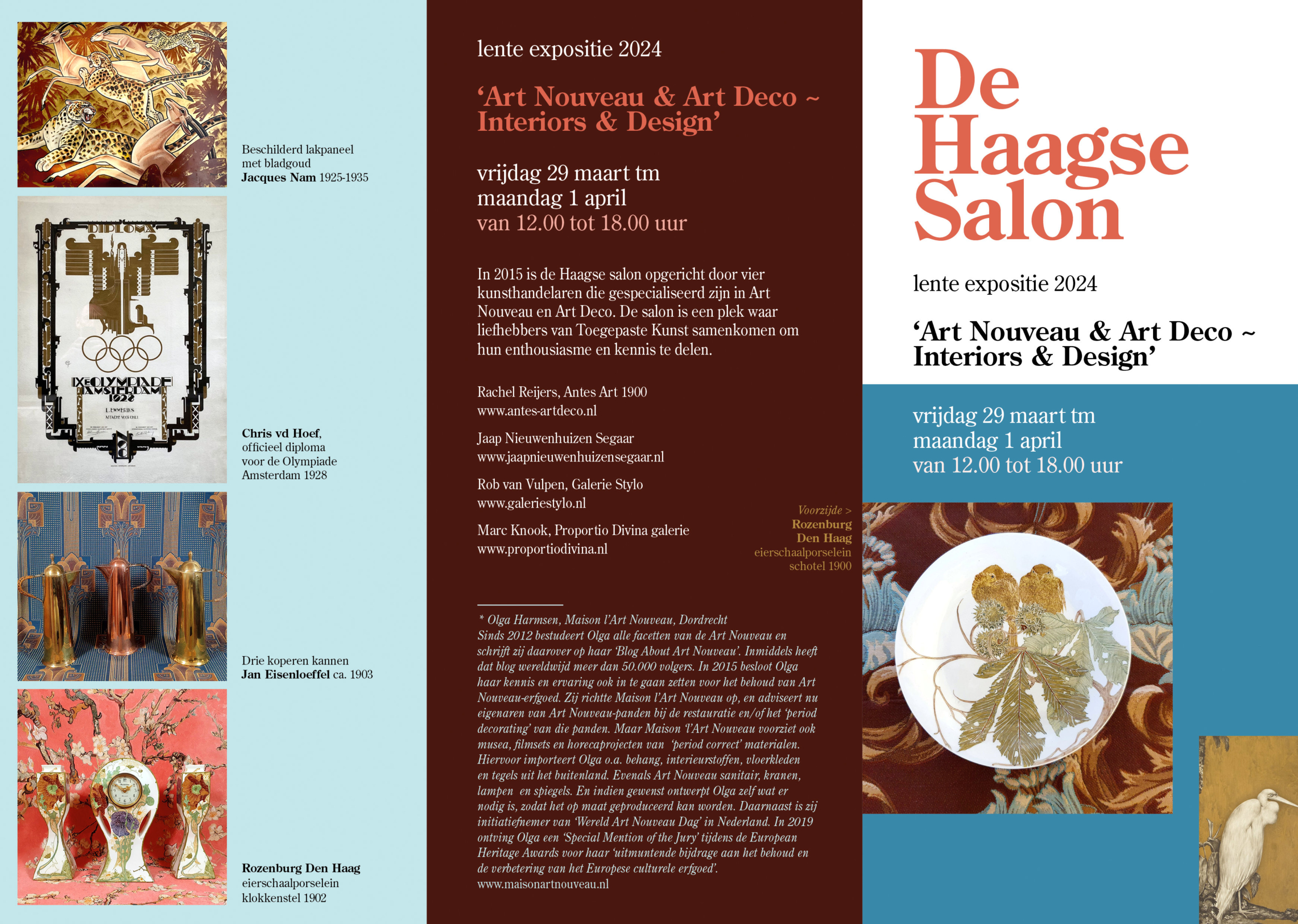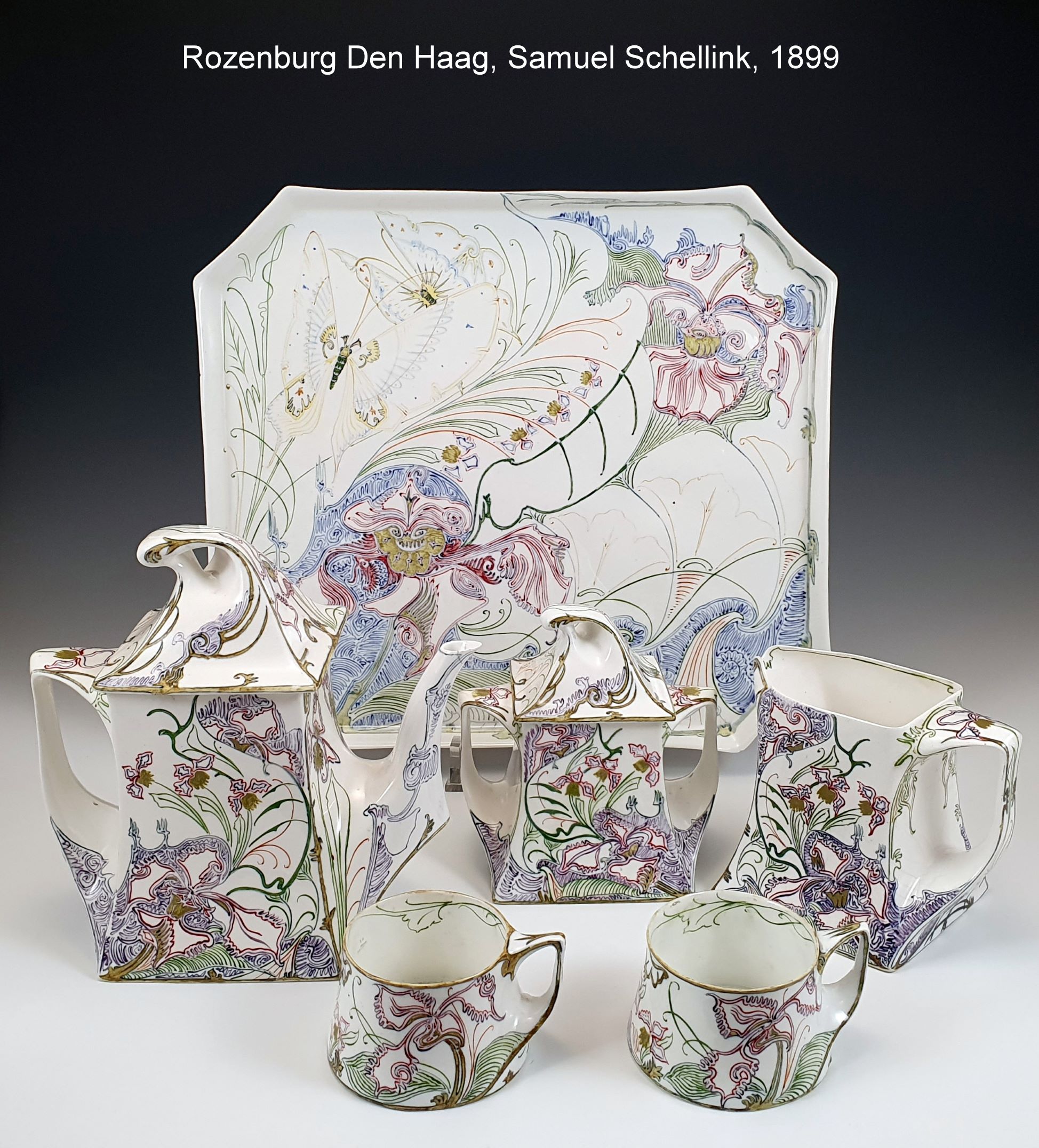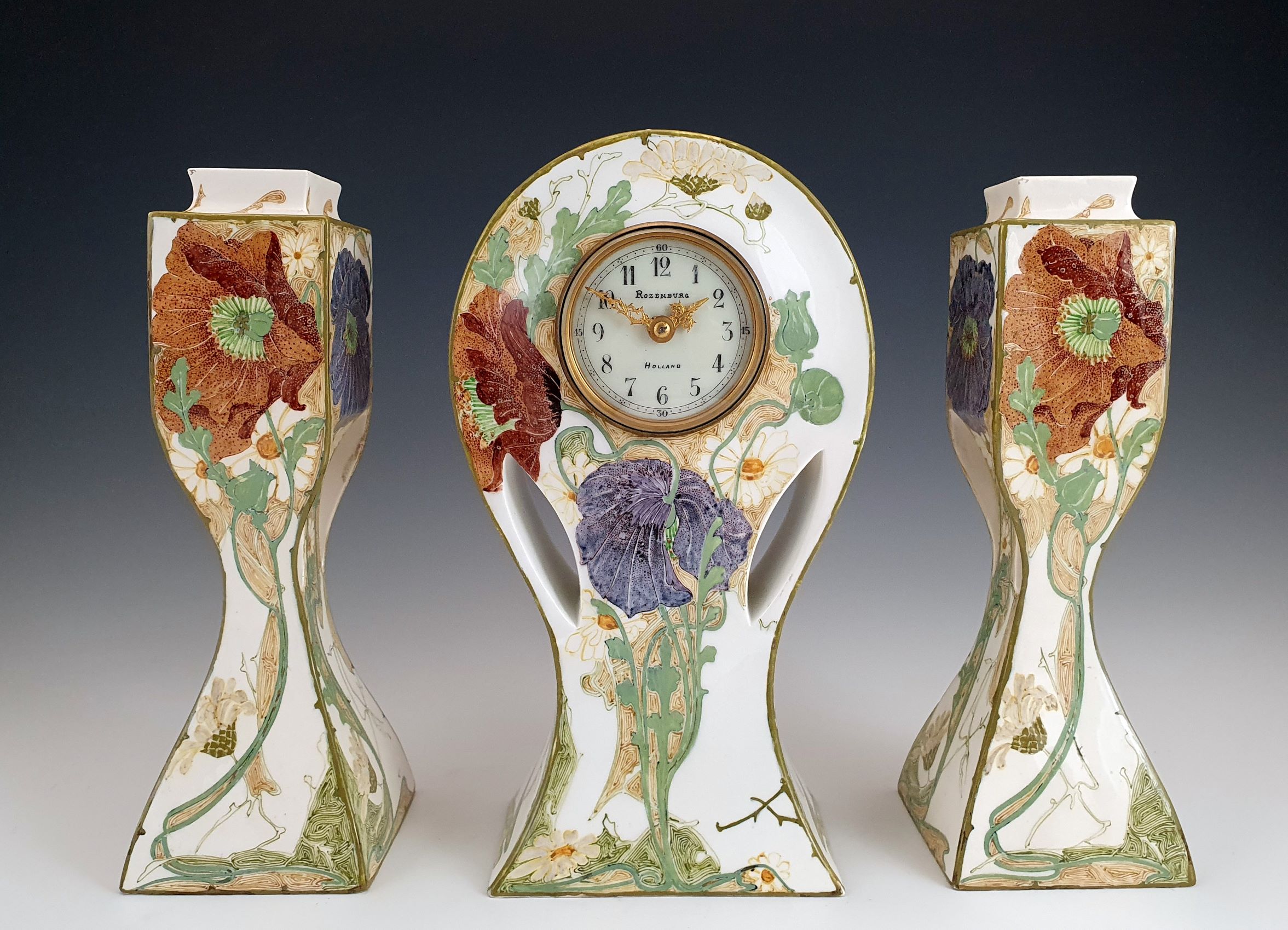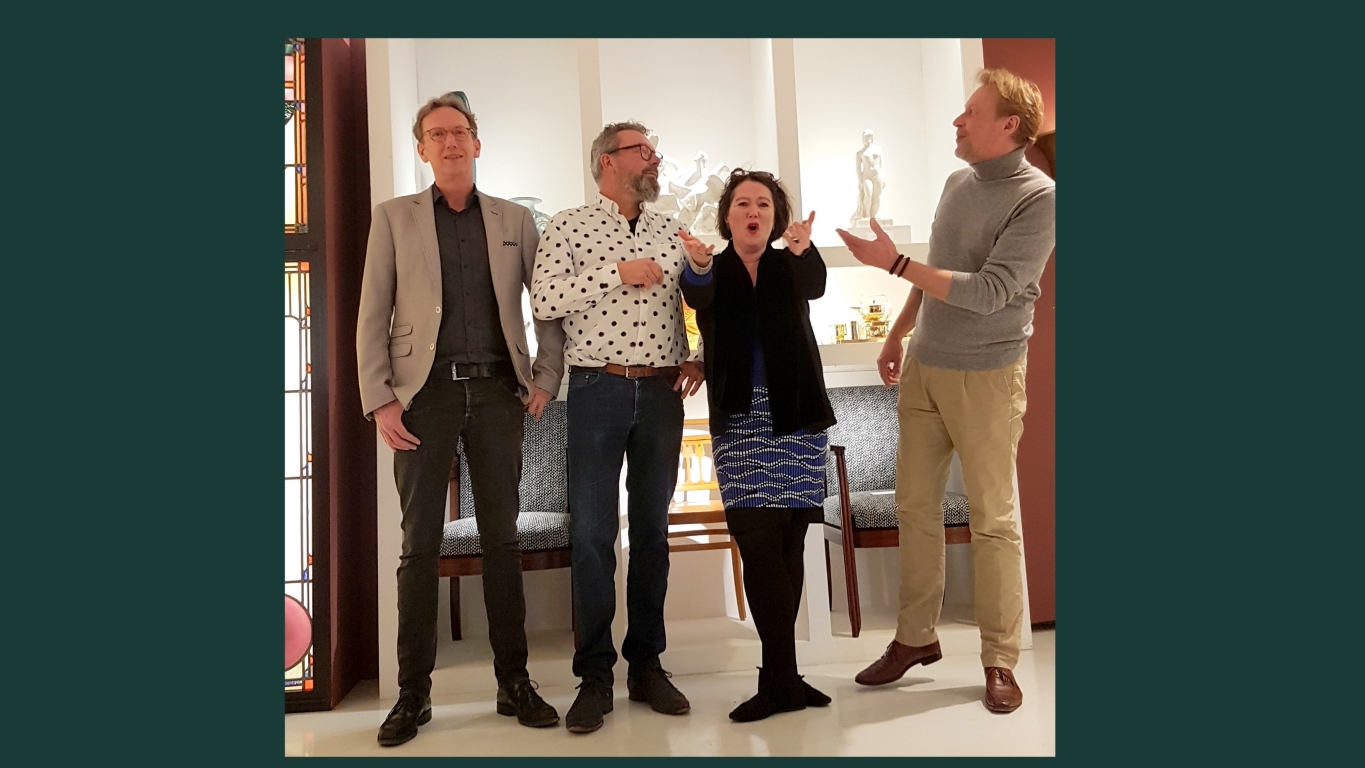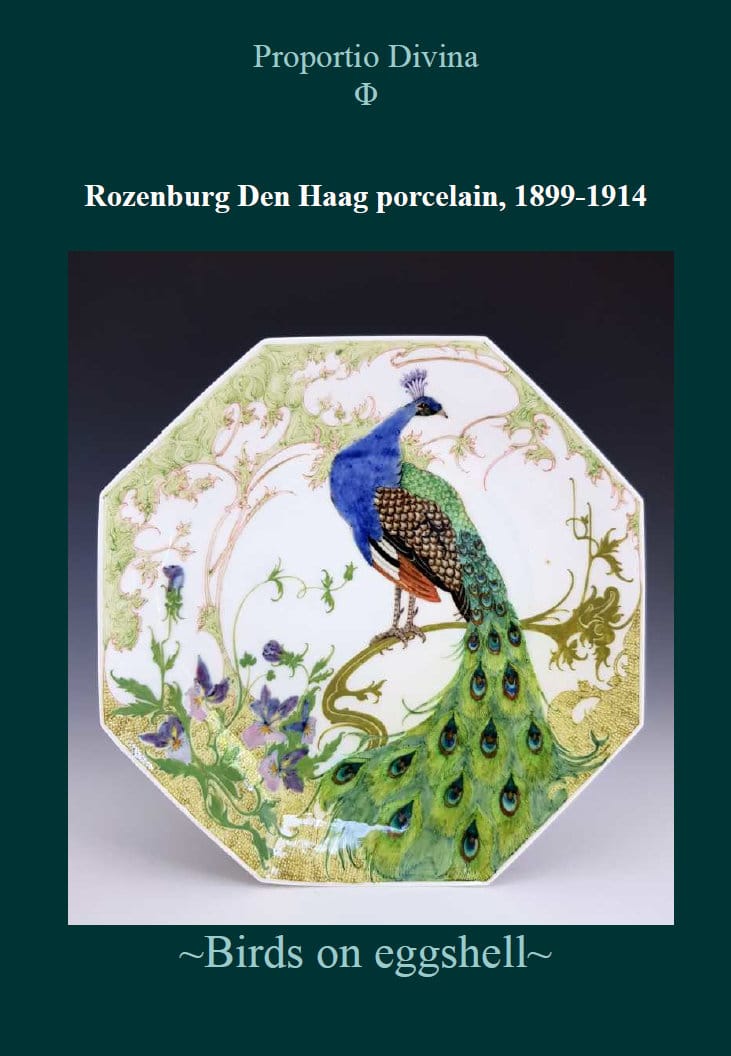Design by Theo Nieuwenhuis (1866-1951), executed at E.J. van Wisselingh & Co, Amsterdam, Inktstand for mr. Ferdinand Kranenburg, 1903, enameled brass and red copper, 15 x 35 x 21,5 cm, Gemeentemuseum Den Haag
“Latest acquisition presented at the exhibition ‘Art Nouveau in the Netherlands’, from 21 April 2018 till 28 October 2018”
https://www.facebook.com/Gemeentemuseum/videos/10214276079888271/?t=1
The Gemeentemuseum has acquired a unique piece by Dutch art nouveau designer and decorative artist Theo Nieuwenhuis. The inkstand was executed at the workshop of Amsterdam-based art dealer E.J. van Wisseling & Co. in 1903. This piece is part of a lavishly decorated interior, of which the Gemeentemuseum already has several components in its collection. Our latest acquisition reunites the inkstand with, among others, the oaken writing desk for which this luxurious desk accessory was originally made.
The brass and red copper inkstand is decorated with vines, the Amsterdam coat of arms and the year of manufacture. The enamel inkwells are adorned with signs of the zodiac and jurisdiction motifs. The piece was commissioned by the affluent Amsterdam lawyer and art enthusiast Ferdinand Kranenburg. In 1899, he commissioned Theo Nieuwenhuis (1866-1951) to decorate his office annex private home.
This was one of the first big assignments for the Van Wisselingh firm, an art dealership that had recently been expanded with its own furniture workshop. Amongst others, Nieuwenhuis, Carel Lion Cachet (1864-1945) and Gerrit Willem Dijsselhof (1866-1924) worked on eye-catching interior designs, commissioned by a well-to-do clientele. The expansion was necessary because Dijsselhof was designing paneling and ‘batik’ wall hangings for a room for the Amsterdam doctor Willem van Hoorn, which has been preserved as the ‘Dijsselhof Room’ at the Gemeentemusem.
Nieuwenhuis continued working on this assignment for Kranenburg for several years and designed, in addition to the inkstand, several pieces of furniture (including a large writing desk, several chairs and various filing cabinets), doors, a partial paneling, a marble fireplace with a mirror, a cassette ceiling, two stained glass panels, lamps and a rug. Part of this interior can be viewed at the exhibition ‘Art Nouveau in the Netherlands’.
Museum director Benno Tempel: “Nieuwenhuis’s interior combines several disciplines into a whole: furniture design, textile, metal work, architecture, all parts have been meticulously synchronized with each other. Like a puzzle piece, the inkstand fits perfectly into our collection, which represents Dutch arts from the turn of the century in a very rich and multidisciplinary way.”
‘Art Nouveau in the Netherlands’
‘Art Nouveau in the Netherlands’ presents a history of Dutch applied arts from the ‘fin de siècle’, a period in history in which designers and artists were searching for a new art for a new (and better) society. Art Nouveau is an art movement with international connections, but at the same time it has a very Dutch identity.
The exhibition places Dutch art nouveau in the wider perspective of a changing society around the turn of the century. The dynamics of the time (1884-1914) become accessible, tangible and recognizable in our modern times, in which authenticity and craftsmanship are once again highly valued. With art works by, amongst others, Jan Toorop, Hendrik Petrus Berlage, Gerrit Willem Dijsselhof, Anna Sipkema, Johan Thorn Prikker and Karel de Bazel.

Design by Theo Nieuwenhuis (1866-1951), executed at E.J. van Wisselingh & Co, Amsterdam, Inktstand for mr. Ferdinand Kranenburg, 1903, enameled brass and red copper, 15 x 35 x 21,5 cm, Gemeentemuseum Den Haag
